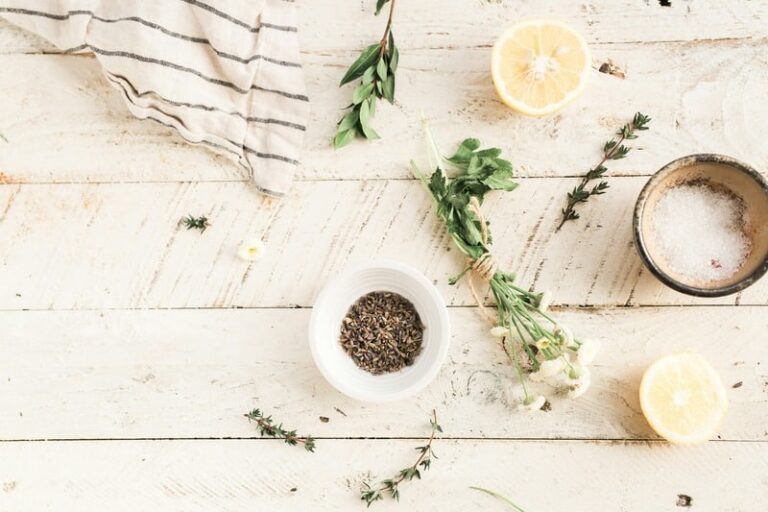These 10 High-Protein Vegetables Are Secretly Protein Powerhouses—Here’s How to Use Them!
Think protein only comes from meat? Please—plants have been flexing their protein muscles longer than most gym memberships. These Top 10 High-Protein Vegetables Are Secretly Protein Powerhouses! Toss out the stereotypes, because these veggies are loaded with not just protein, but fiber, vitamins, and all the nutrition your body craves. Whether you’re plant-powered or just bored with chicken, these picks will help you crush your nutrition game.
What is Protein?
People have the idea that protein only comes from vegetables. That could be farther from the truth. Firstly, what is protein and what do we need it for? According to the Cleveland Clinic, “proteins are molecules in the body made up of amino acids,” and they are a “macronutrient.” What does that actually mean? Without protein, you cannot survive. Protein repairs your muscles, transports messages (it’s reading your genes), and breaks down carbohydrates and fats. Long story short, you need protein to survive.
High-Protein Vegetables and the Benefits
If I can get my protein from meat, dairy, and eggs, why do I need plant-based protein? Plants offer other nutrients your body needs that are not found in meat, dairy, and eggs. High-protein vegetables supply your body with dietary fiber and a variety of nutrients (vitamins and minerals), which are not found in animal proteins; the majority of the plant-protein fats are unsaturated, unlike the animal protein counterparts, which have saturated fats. So, plants are heart-friendly with no cholesterol. Lastly, it is widely known that people who partake in a plant-based diet have lower risks of heart disease, some cancers, and type two diabetes.
What are the High-Protein Vegetables?
These Top 10 High-Protein Vegetables Are Secretly Protein Powerhouses! Although there are many other vegetables with protein, these are the ones that pack that punch.
1. Edamame
Protein: 9g per 1/2 cup (cooked)
These young soybeans are little green dynamos. Snack on them or toss them in stir-fries.
Source: Prevention
Recipe Ideas: Find recipes here.
2. Green Peas
Protein: 8g per cup (cooked)
Tender and sweet, peas are full of protein and vitamins. Add to soups or salads.
Source: EatingWell
Recipe Ideas: Get inspired here.
3. Red Potatoes
Protein: 7g per large potato (cooked)
Don’t mistake these spuds for empty carbs—there’s serious protein and fiber here. With 7 grams per large potato, you will be able to make it a smashed potato in no time.
Source: Prevention
Recipe Ideas: Try them here.
4. Spinach
Protein: 6g per cup (cooked)
Spinach is a protein that’s great in everything, or at least easy to hide in everything. My kids have never suspected a thing, whether in their smoothies or blended in a sauce, spinach is so easy to incorporate. Just remember how much it shrinks down when it is cooked—go ahead and buy an extra bag!
Source: Medical News Today
Recipe Ideas: Spinach inspiration here.
5. Sweet Potatoes
Protein: 5g per large potato (cooked)
Sweet potatoes are more than orange carbs—they bring the protein party too. This simple potato can become a protein powerhouse. Skip the brown sugar and butter, and stuff it with your favorite veggies and meats.
Source: Prevention
Recipe Ideas: Get creative here.
6. Artichokes
Protein: 4.8g per cup (cooked)
A fancy veg that’s all about the fiber, antioxidants, and yes, extra protein. I am not going to lie, the fire-roasted artichoke dipped in a little bit of balsamic vinaigrette is my favorite, and I had no idea I was getting this much protein at the same time.
Source: EatingWell
Recipe Ideas: Check them out here.
7. Sweet Corn
Protein: 4.7g per cup (cooked)
Don’t sleep on corn—it packs a punch with protein and keeps you full. It’s CORN! I have nothing else to add, but you can cook it, bake it, or roast it. Spring, Summer, Fall, or Winter, corn will always be around.
Source: EatingWell
Recipe Ideas: Try these here.
8. Asparagus
Protein: 4.3g per cup (cooked)
A springtime favorite that’s low-cal, high-protein, and super classy. They are so classy that sometimes they are overlooked. Whether cooked or raw, they add a new dimension to your meal and contribute to your protein intake.
Source: Medical News Today
Recipe Ideas: Enjoy asparagus here.
9. Brussels Sprouts
Protein: 4g per cup (cooked)
These little cabbages are big on flavor and bring protein to the table. Brussels Sprouts sometimes get a bad wrap, but they are one of my favorites. These little guys are extremely versatile.
Source: EatingWell
Recipe Ideas: Roast, toss, love them here.
10. Mushrooms
Protein: 4g per cup (cooked)
Mushrooms: meaty, savory, and surprisingly protein-rich. Remember, there are a ton of different kinds of mushrooms, and they each have different protein levels. But they are all delicious and help you create new and exciting meals.
Source: EatingWell
Recipe Ideas: All the mushroom goodness here.
Tips For Plant-Based Proteins
Know your plants. Not all plant-based proteins are created equal, and some need a plant buddy to give you all of the amino acids you need for a complete protein. Soy products, such as edamame, and some mushrooms, are complete proteins. Many of the other vegetables just need another plant friend to complete all 9 essential amino acids, and it’s not hard to do. Add beans to your sweet potato or have some hemp seeds in that spinach and fruit smoothie. Not only are you adding more plant-based items, but you are also adding even more protein with fewer calories. You are giving your body a wide variety of vitamins, minerals, and dietary fiber, too! This is a complete win-win.
Final Thoughts
Ready to upgrade your plate? Mix up these veggies, pair them with grains or nuts, and watch your meals go from basic to protein-powerhouse. Don’t let the veggies intimidate you! Get out there and show those veggies who’s boss! And for all that is good, season your vegetables. They love the additional attention, and so will your taste buds.







